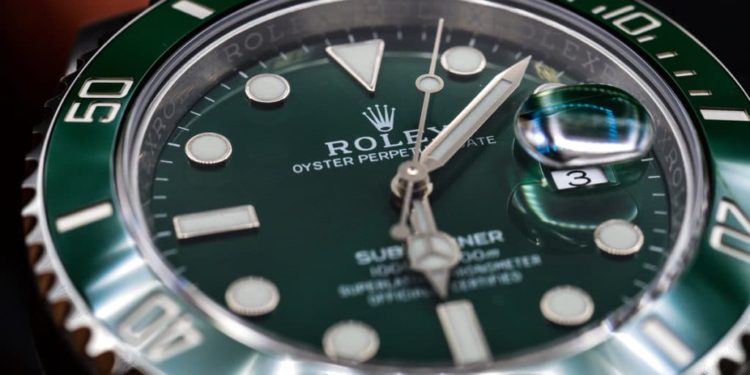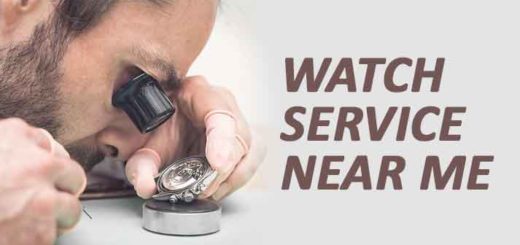Estimate The Value Of Your Watch In 7 Easy Steps

Watches are a tried and tested investment option for many people. Not only can they be enjoyed while you own them. But they gain value all the time too. So inheriting or finding an old watch can give you a reason to celebrate early. But if you don’t know anything about watches and their value, how do you know the worth? Estimating the value of your watch can be more complex than it seems. And getting to a price is more of an art form than a science. But if you want to sell the watch, you want to know if you’re getting a fair price for it.
While it’s not an exact science, there are things to look out for. Here are 7 easy steps to help you determine an estimate for the value of your watch.

Rolex Oyster Perpetual
How to Estimate The Value Of Your Watch
1. Model
When it comes to estimating the value of your watch, the best place to start is the make and model. These factors should be easy to identify and can give you an idea of worth quite quickly. Rolex and Omega, the high-end luxury watchmakers, hold their value well no matter their age. And models that showcase complicated builds or are limited edition runs tend to have a higher than average value.
If you are curious about the highest value models, check out the highest value watches ever sold at auction.
2. Condition
If you’re working out the worth of anything you own, an important question to ask is whether the item is still working or not. And that’s no different when it comes to valuing your watch. If the item is damaged or missing critical mechanical parts, then its value with decrease.
Assigning worth to an old watch means assessing the condition it’s currently in. That means looking at both its physical and functional condition.
Determining the physical condition of the watch means getting the microscope out and examining its entire surface. That includes the case, bracelet, and crystal surfaces, too, if there are any. Take into account any blemishes, scratches, or dings when it comes time to make your estimation.
When it comes to assessing the functional condition of your watch, you’ll be checking it works as it was intended to. With the movement of the watch, you’ll also need to consider whether the clasp is working well. To help, you can compare your watch’s function to the manufacturers’ specifications.
3. Appearance
The visual look of your watch can change its worth quite dramatically. Clear and unblemished faces always fetch a reasonable price thanks to their classic look and overall quality. Unique characteristics can also raise your watch’s value because collectors are looking to grow their collection. Ensure to make a note of any qualities that set your watch out from the crowd. Such as a two-tone movement, an exciting dial, or an engraved case.
Don’t be put off if your watch is old and has signs of aging. Even they can add value as it adds an authentic vintage look. Your watch has character if it ages well. You want to look for a faded bezel or a brownish hue to the markers and hands. They’ll add value if the watch still has crisp edges. Any signs of aging that have led to damage will, of course, bring the value down.
4. Rarity
Always check out if you’ve managed to stumble across a rare find in the watch world. If you have a limited edition watch or one from a smaller production run from a top brand, that adds value. And it continues to add more value over time. As long as you have the original box and papers of authenticity, you can look at an attractive investment.
5. Extras
Original boxes and paperwork can make a big difference when it comes to watch appraisals. That’s because the paperwork often contains a warranty and a certification card. In addition, you’ll get even more specific info like a serial, reference, or model number.
It’s not surprising if you don’t have them, though. They do tend to go missing. But it can mean the price comes down dramatically. Yet, if your watch is lower cost or not limited, then missing the paperwork won’t hamper the valuation too much.
6. Demand
When estimating the value of your watch, you’ll want to get a handle on whether on not it’s in demand. So check trading sites like eBay for comparable watches and whether they’re sought after or not. If there’s a low supply of an in-demand watch that you own, then you’re pretty much guaranteed to get a better-than-average price for it.
Don’t forget to consider pop culture, either. After James Bond sported Rolex and Omega brand timepieces, they sold like hotcakes. And many fans still search for them. So check out whether your watch was in a feature film. It may increase its value.
7. Estimation
By this point, you’ll have as much information as you can gather from your watch. And now comes the time to bring everything together for your estimation. But you’ll need something to compare it against. Because that’s what your watch’s worth hinges on. Comparable sales.
Thankfully, finding comparable sales are pretty straightforward. You can search an online sales forum, auction sites like eBay, or reputable resellers. An online sales forum would be your best resource. The other places will give you a better idea of what people are actually willing to pay, though.
More Info on How to Estimate the Value of Your Watch
Looking for more insight on estimating your watches value? See the video below…
Other Avenues to Estimate the Value of Your Watch
After all of your hard work, there is a possibility that you’re not happy with your estimation. Or you can’t find enough comparable sales to get a decent idea of pricing. Especially if your watch is rare. If that’s the case, approach a professional. It pays to get a second opinion when you’re not sure.
There are a few different ways to get an estimate from a professional:
- Take it to a jeweler and ask for an appraisal.
- Call a watch auction house and tell them what you have, they can estimate the value.
- Look up comparable models on Ebay and see what the market is.
Estimate the Value of Your Watch – Conclusion
Estimating the value of your watch is an important step. You should do this when you want to sell it, need to have repair work done, or for insurance purposes. Following the above guidance to estimate the value of your watch should put you in a good position to get an idea of the actual value of your timepiece.





 Our mission is to help people find local watch repair shops and authorized service centers. As avid collectors we understand how to find trustworthy services that can keep your precious timepiece both functional and beautiful.
Our mission is to help people find local watch repair shops and authorized service centers. As avid collectors we understand how to find trustworthy services that can keep your precious timepiece both functional and beautiful. 
